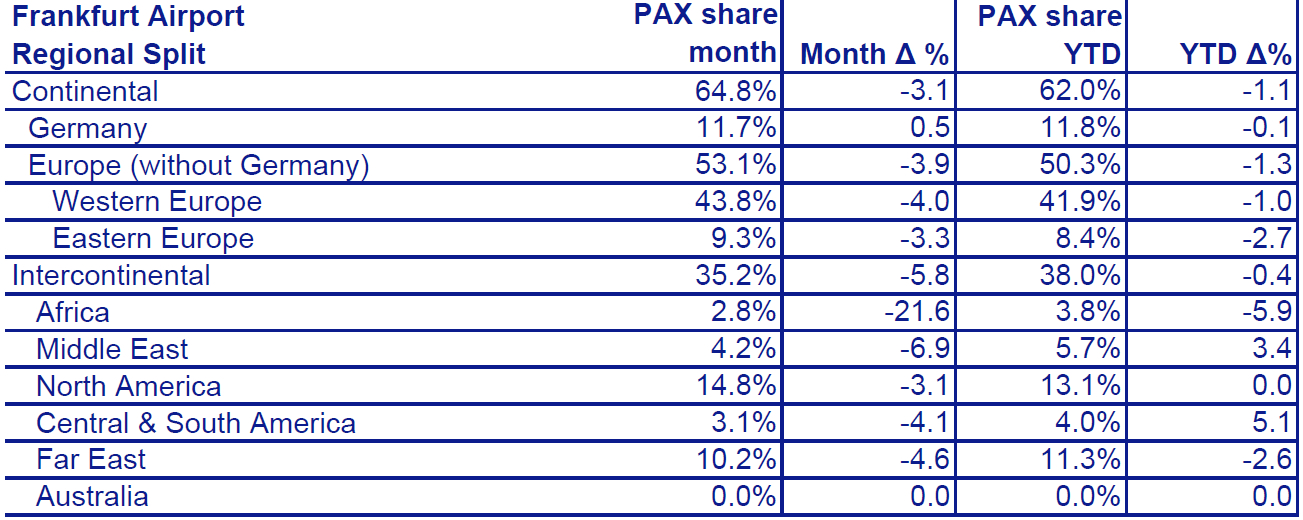GERMANY. Frankfurt Airport handled 28.7 million passengers in the first six months of 2016, a dip of -0.9% year-on-year.
Parent company Fraport said that key reasons included “the disproportionate thinning-out of the flight schedule, the relatively high number of flight cancellations in the first half, and the reduction in travel bookings reflecting the overall geopolitical situation”.
In June, the German hub handled 5.5 million passengers, down by -4.1% on the same month a year ago.
Almost half a percentage point of this decline can be attributed to around 230 weather and strike-related flight cancellations, affecting some 24,000 passengers.

In the first half of 2016, Fraport’s international portfolio of airports reported varying traffic results.
In South America, Lima Airport recorded double-digit growth of +11% to 8.9 million passengers in the first half (+13% in June).
Ljubljana Airport served 598,271 passengers from January to June 2016, representing a -4.5% decline year-on-year (-9.2% in June).
The Twin Star airports of Varna and Burgas on the Bulgarian Black Sea coast also achieved strong growth, with both gateways serving a total of 1.2 million passengers – a surge of +24.8% (+23.4% in June).
Antalya Airport continued to experience a slowdown, with traffic dropping by -30.5% in the first six months of the year to 7.3 million passengers (-47.1% in June).
Traffic at St. Petersburg Airport in Russia was hit by a -6.5% slide to 5.7 million passengers in the half (-7.6% in June).
In northern Germany, Hanover Airport registered a slight -0.7% dip in traffic to 2.4 million passengers (-2.9% in June).
Traffic at Xi’an Airport in China continued to advance strongly during the first six months of the year, rising by +11.3% to 17.5 million passengers (+10.8% in June).














